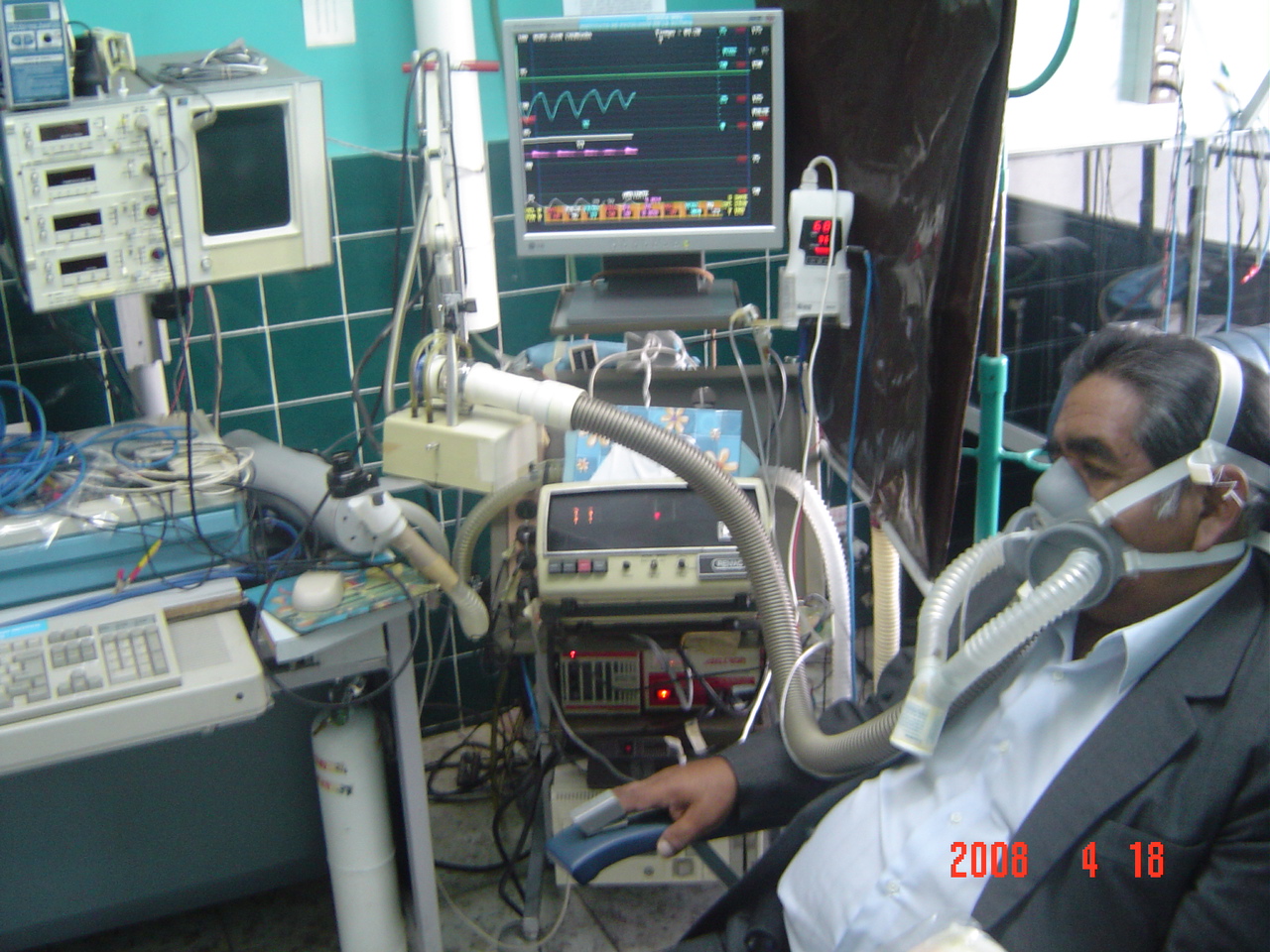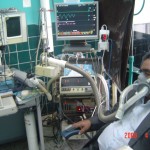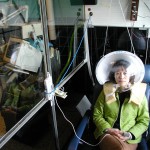Forever: “Loss of Adaptation” does not exist!
Prof. Dr. Gustavo Zubieta-Castillo (Sr)
Honorary Director Español (mas abajo)

Instituto Pulmonar y Patología de la Altura IPPA
La Paz, Bolivia
AltitudeClinic.com
Chronic Mountain Sickness (CMS) is a term that does not explain the ethiopathogenesis of the disease in response to the effect of chronic hypoxia. There is no CMS, but rather pulmonary (mainly), cardiac, carotid, kidney, hematological or genetic disease. All these associated to an increase on the hematocrit or what is now known as polyerythrocythemia.
CMS, was described by Carlos Monge Medrano close to 90 years ago, He was unable to find an explanation for the signs and symptoms and chose to use the term “LOSS OF ADAPTATION”. This was originally accepted, but today it can be appreciated as lacking significance. And should stop being used.
Undoubtedly, CMS is a chronic hypoxic process resulting in an increase of hemoglobin, due to pulmonary lesions (fundamentally), that alter the pulmonary function, thereby reducing the oxihemoglobin saturation and stimulating the increase of red blood cells. This, essentially, in pulmonary lesions that are sequelae of diverse lung disease giving rise to intra-pulmonary shunts or uneven ventilation-perfusion. The term “LOSS OF ADAPTATION”, is even semantically inadequate, because in nature, living beings tend to adapt to different environments and circumstances. These could be: going to high altitude, temperature changes, solar radiation, UV radiation, diet changes, etc, etc . Consequently, to insist in contemporary medicine on the use of “LOSS OF ADAPTATION”, is not only a mistake, but rather foolishness!
On the other hand, if one is convinced as to the cause of a disease, where other scientists are in disagreement, it is futile to incur in the use of insults. In the International Chronic Mountain Sickness Consensus Group, you Fabiola Leon-Velarde, recurred to them in your e-mail on January 09, 2005 with the expression as follows:
“Third, we have agreed in Xining that any member of the group who have had a different opinion in any point, should send a letter to the Journal informing about the discrepancy. Of course, if any member of the group do not agreed at all with the Consensus, he should ask that his name is retired from the list of names, otherwise his letter will appear a little bit esquizofrenic.”
Please note that you misspelled the word… “schizophrenia”. This is what happens when one is not a medical doctor and doesn’t have medical knowledge. You live in Lima, at sea level,and your brief visits to high altitude, give you no authority or experience on disease at high altitude. Through your attitude, you are confusing world researchers. This has to be said for the sake of truth. Your knowledge should be restricted to the spectrum provided by your occupations instead of persisting on the use of “loss of adaptation” in regards to CMS. To have written a book entitled “Desadaptation a las grandes Alturas” (Loss of adaptation to high altitude) is to insist and confirm that you hardly understand the basic concepts of nature. A grave mistake, with no return.
In reference to this article please read “Consensus statement on chronic and subacute high altitude diseases” (1) . where we participated as a minority with an opposite standing versus “Loss of Adaptation”. We stated our concepts in regards to CMS within the aforementioned group (comments are available, on-line (3,4).) In that group, there were many prestigious scientists, from around the globe, but most of them lacked knowledge about diseases at high altitude.
We urge the reader not to misinterpret us. We are not offended by the insult, and quite the contrary we laughed upon reading it as anecdotal. What we are doing here is setting things straight, for the sake of science. The term “loss of adaptation” is inadmissible as it does not explain an ethiopathogenesis.
We are so convinced, based on our fifty years of high altitude research and experience, that living beings not only adapt to life at 5000m, as it is well known, but rather even to 8842m at the summit of Monte Everest. There can be no doubt.
Similarly, pulmonary and cardiac patients in chronic hypoxic environments at high altitude, also adapt, hand in hand with their disease. Polyerythrocythemia, is one of the resulting hematologic mechanisms that allows for an increase of the oxygen content.
You, on purpose, as you have done before, exclude us from participating in the THE VIII WORLD CONGRESS ON HIGH ALTITUDE MEDICINE AND PHYSIOLOGY – CARLOS MONGE CASSINELLI. Congratulations for naming it after our dear friend Choclo.We remind you that we initiated these world congresses successfully, in Bolivia, back in 1994. We invited everyone dedicated to high altitude to attend, including yourself as you were Choclo’s collaborator.
We are now at our III CHRONIC HYPOXIA SYMPOSIUM in October 2010 in La Paz, Bolivia. You and everyone are invited to attend, with no restrictions, nor political interest groups, that often block the participation of some, that think different.
Throughout history, all living beings, go through evolution, in order to adapt to different environmental conditions. Even aging is an evolution, that goes to finish a vital cycle. It never goes in the reverse way. This concept of loss of adaptation is unacceptable.
Again, “The organic systems of human beings and all other species tend to adapt to any environmental change and circumstance within an optimal period of time, and never tend towards regression which would inevitably lead to death” (2)
La Paz, March 11, 2010
———————————————————————————————-
Para siempre: La “Desadaptación a la Altura”: No existe !
Prof. Dr. Gustavo Zubieta-Castillo (Sr)
Director
Instituto Pulmonar y Patología de la Altura IPPA
La Paz, Bolivia
El Mal de Montaña Crónico (CMS), es un término inadecuado porque no explica la etiopatogenia de la enfermedad. Las enfermedades en la altura sufren el efecto de la hipoxia crónica. No existe el mal de montaña crónico sino las enfermedades pulmonares de diferente etiopatologia que van asociadas al aumento del hematocrito o polieritrocitemia.
Carlos Monge Medrano, describió admirablemente los síntomas y signos del Mal de Montaña Crónico. Al no encontrar una etiología adecuada, para esa época, utilizó el termino DESADAPTACION. Este término aceptado al principio, se puede comprobar que actualmente no tiene significación.
El síndrome de Mal de Montaña Crónico, se sabe actualmente, sin que pueda hacerse objeciones, es fundamentalmente, un proceso crónico hipóxico con un aumento del hematocrito. Esto debido a lesiones pulmonares que alteran la función respiratoria y que impiden la adecuada saturación de la sangre estimulando el aumento de los glóbulos rojos. Sobretodo es debido a secuelas de lesiones pulmonares de diversa etiología con shunt pulmonar y/o ventilación no uniforme. El termino desadaptación, es incluso semánticamente inadecuado porque en la naturaleza los seres biológicos tienden a la adaptación a diferentes medios y circunstancias. Como ser: cambio de altura, de temperatura, radiación solar, radiación UV, cambio de alimentación, etc, etc. De manera que insistir en la medicina contemporánea con el termino desadaptación, no solo es un error, sino una insensatez!
Por otra parte si uno tiene la convicción sobre las causas de alguna enfermedad, con la cual no están de acuerdo otros científicos, no es esto motivo, para que se recurra al insulto. La ecuanimidad esta en reconocer que uno puede equivocarse pero no tratar de imponer criterios recurriendo al insulto como lo esta haciendo Ud. Fabiola Leon Velarde.
Para referencia está la publicación “Consensus statement on chronic and subacute high altitude diseases”(1) donde participamos minoritariamente con una posición contraria a la Desadaptación.(3,4). Ese grupo de prestigiosos científicos de todo el mundo, tenian escaso conocimiento de las enfermedades en la altura.
Durante las reuniones previas en Jan09,2005, Ud. nos escribió (traducido al Español):
“Tercero, hemos acordado en Xining, que cualquier miembro del grupo que tuviera una opinión diferente, debería enviar una carta al Journal informando de esa discrepancia. Por supuesto, si algún miembro del grupo no esta de acuerdo con el Consenso, debe pedir que su nombre sea retirado de la lista de nombres, de otra manera su carta aparecería algo esquizofrénica. (esquizofrenic en la version en ingles)”
Ojo, en Inglés se escribe “schizophrenia”.
Su audacia no tiene limites, porque Ud. no es medico y por lo tanto no sabe medicina. Ud. vive en Lima, a nivel del mar, y sus visitas esporádicas a la altura no le dan ninguna autoridad ni experiencia y esta confundiendo a los investigadores presentando estos casos. Sus conocimientos deberían estar limitados al espectro que le permitan sus ocupaciones y no tratar de insistir de que el mal de montaña es debido a “desadaptacion”. Haber escrito un libro titulado “Desadaptación a las grandes alturas” es insistir y confirmar que no se entiende los conceptos básicos de la naturaleza. Error cometido irremediablemente.
No nos ofende, ni causa resentimiento que Ud. en esa oportunidad, nos llamó esquizofrenicos, y sentimos por el contrario que es motivo de buen humor y anecdotico. Lo que estamos haciendo es afirmar que el termino desadaptación es inadmisible porque no explica ni señala una etiopatologia.
Estamos tan convencidos que el ser biológico no solo se adapta a la vida a los 5000m, sino hasta los 8842m en la cima del Monte Everest. No cabe duda… De igual forma los enfermos pulmonares o cardiacos en el ambiente hipóxico de la altura, también se adaptan con su enfermedad, resultando la polieritrocitemia, un mecanismo para aumentar el contenido de oxígeno.
Ud. nos excluye intencionalmente del VIII Congreso Mundial de Medicina y Fisiología de la Altura, cuya serie, nosotros iniciamos exitosamente en Bolivia el año 1994, al que invitamos cordialmente a todos dedicados a la altura, incluyéndola a Ud. por ser la colaboradora de nuestro amigo Carlos Monge Casinelli. Nos alegramos que el VIII sea en honor a nuestro amigo Choclo.
Nosotros tenemos el III Simposio del Efecto de La Hipoxia Crónica en las Enfermedades en la Altura en Octubre 2010, al cual queda Ud. Cordialmente invitada, aquí en La Paz. Todos están invitados a participar, sin restricciones, ni grupillos de interés político común, como frecuentemente ocurre bloqueando intencionalmente la participación de algunos, que opinan diferente.
A través de la historia, todos los seres vivientes evolucionan, para adaptarse a diferentes condiciones ambientales. Incluso la edad es una forma de evolución, que se dirige a finalizar un ciclo. Nunca va en sentido contrario. Este concepto de Desadaptacion es inaceptable.
Nuevamente, “Los sistemas orgánicos de los seres humanos y de las otras especies tienden a la adaptación a cualquier cambio ambiental, dentro de un periodo óptimo de tiempo, y nunca tienden hacia la regresión que inevitablemente daría curso a la muerte”.(2)
La Paz, 11 de marzo de 2010
References
Consensus statement on chronic and subacute high altitude diseases.
High Alt Med Biol. 2005 Summer;6(2):147-57
2) Zubieta-Castillo G Sr, Zubieta-Calleja GR Jr, Zubieta-Calleja L.
Chronic mountain sickness: the reaction of physical disorders to chronic hypoxia.
J Physiol Pharmacol. 2006 Sep;57 Suppl 4:431-42.
3) http://altitudeclinic.com/blog/2010/07/chronic-mountain-sickness-discussion-part-1/
4) http://altitudeclinic.com/blog/2010/07/chronic-mountain-sickness-discussion-part-2/




